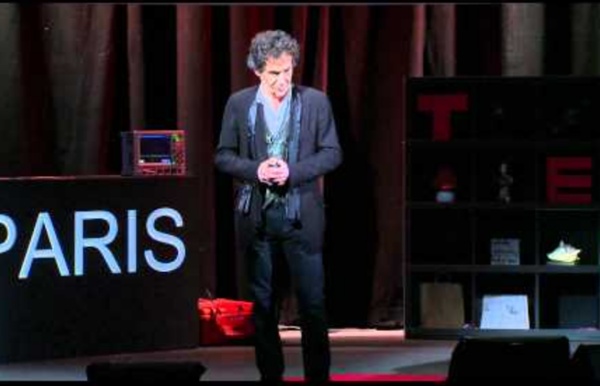



Loi d'attraction 2ème degré : choisissez ce que vous voulez être ! La littérature sur la loi d’attraction présente un inconvénient : celui de se focaliser principalement sur des objets matériels, finissant presque par nous détourner de notre véritable nature, qui n’est pas tant d’ « Avoir » toujours plus, que d’ « Etre » toujours davantage ! Comment utiliser la loi d’attraction 2.0 de manière encore plus juste et efficace ? Au lieu de se focaliser sur des choses que l’on désire « avoir », il est préférable de se concentrer plutôt sur ce que l’on désire « être ».. ce qui aussitôt attire puissamment à nous les choses que l’on désire avoir ! Il ne faut pas mettre la charrue avant les boeufs : L’Etre attire l’Avoir, mais l’Avoir n’attire pas l’Etre. Nous avons aussi exposé sur ce site des pratiques simples et puissantes, comme : Dans cet article, nous proposons une manière plus fine de comprendre et de mettre en oeuvre ces bonnes pratiques, afin d’en augmenter la portée et l’impact. Commencer par une focalisation facile Loi d’attraction et alignement intérieur
Leaving the Milky Way? All You Need to Do is Travel 1.2 Million MPH Sick of the Milky Way Galaxy? Ready to get the heck out of dodge? No problem, all you need is a way to travel at a speed of 1.2 million mph, and BOOM – you’re outta here! Crazy as it sounds, that’s the new theory – at least according to a team of researchers from the Leibniz Institute for Astrophysics in Potsdam, Germany. So is it possible for a human craft to eventually generate enough speed and power to leave the Milky Way? Astronomer Joss Bland-Hawthorn puts the idea of a spacecraft leaving the Milky Way like this: “I know it’s a crazy idea, but if you had lots of matter and lots of antimatter, you could power a spaceship out of the galaxy.” Of course, today’s spacecraft can not even come close to this goal.
Exoplanètes : 1 000 nouveaux mondes LE MONDE SCIENCE ET TECHNO | • Mis à jour le | Jérôme Fenoglio Pour le Nobel, il faudra encore patienter. Mardi 8 octobre, les deux premiers découvreurs d'une exoplanète - les Suisses Michel Mayor et Didier Queloz en 1995 - auxquels le prix est promis par la rumeur depuis des années, ont vu, une nouvelle fois, la récompense leur échapper. Tant pis. A défaut d'un Nobel, cette progression s'est traduite, mardi 22 octobre, par le franchissement du cap symbolique de la millième découverte, dans le classement qui fait autorité parmi les astronomes. Dans l'Univers, seules les étoiles ont le privilège de produire de la lumière. D'ici là, les astronomes ont transformé ce qui les gêne en allié. Les spécialistes peuvent aussi compter sur une autre méthode, l'étude des "transits". Grâce à ces subterfuges, auxquels s'ajoutent plusieurs autres méthodes moins productives, les astronomes ont réussi, en quelques années, à multiplier les détections. Le premier test aura lieu en février 2014.
Research areas | UCLA Physics & Astronomy The areas embraced by UCLA physics research span the range from the well-established disciplines of "big science", e.g. the search for the Higgs boson at the LHC, and frontier plasma science underpinning fusion energy, to newly emerging fields such as the physics of hearing and neuroscience. In astronomy, UCLA faculty are pioneers in the areas of extra-solar system planets, galactic astronomy, and cosmology. This effort is uniquely enabled by the world-renowned capabilities in design and construction of infrared instrumentation by our Infrared Laboratory. The creation of cutting edge instruments that open the door to scientific discovery is a common theme here. First rate experiments are always complemented by theory, and the department has an impressive effort that encompasses condensed matter physics, elementary particles, biophyiscs, and plasma physics. The list of research topics addressed within the department is long and compelling.
smic 'web' seen for first time Image copyright A. Klypin/J. Primack/S. Cantalupo The hidden tendrils of dark matter that underlie the visible Universe may have been traced out for the first time. Cosmology theory predicts that galaxies are embedded in a cosmic web of "stuff", most of which is dark matter. Astronomers obtained the first direct images of a part of this network, by exploiting the fact that a luminous object called a quasar can act as a natural "cosmic flashlight". Details of the work appear in the journal Nature. The quasar illuminates a nearby gas cloud measuring two million light-years across. And the glowing gas appears to trace out filaments of underlying dark matter. The quasar, which lies 10 billion light-years away, shines light in just the right direction to reveal the cold gas cloud. For some years, cosmologists have been running computer simulations of the structure of the universe to build the "standard model of cosmology". Image copyright S. "This is a new way to detect filaments. In the dark
Interplanetary dust particles could deliver water and organics to jump-start life on Earth -- ScienceDaily Researchers from the University of Hawaii -- Manoa (UHM) School of Ocean and Earth Science and Technology (SOEST), Lawrence Livermore National Laboratory, Lawrence Berkeley National Laboratory, and University of California -- Berkeley discovered that interplanetary dust particles (IDPs) could deliver water and organics to Earth and other terrestrial planets. Interplanetary dust, dust that has come from comets, asteroids, and leftover debris from the birth of the solar system, continually rains down on Earth and other Solar System bodies. These particles are bombarded by solar wind, predominately hydrogen ions. This ion bombardment knocks the atoms out of order in the silicate mineral crystal and leaves behind oxygen that is more available to react with hydrogen, for example, to create water molecules. It has been known since the Apollo-era, when astronauts brought back rocks and soil from the Moon, that solar wind causes the chemical makeup of the dust's surface layer to change.